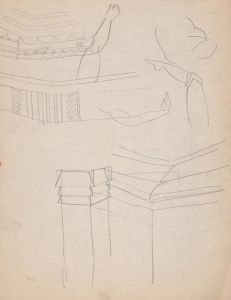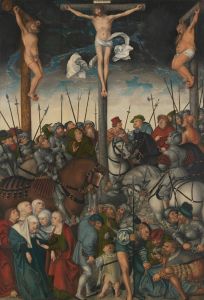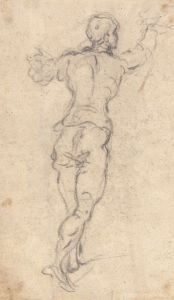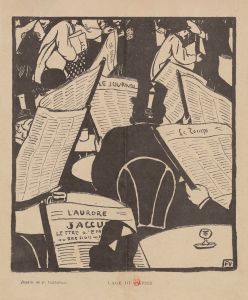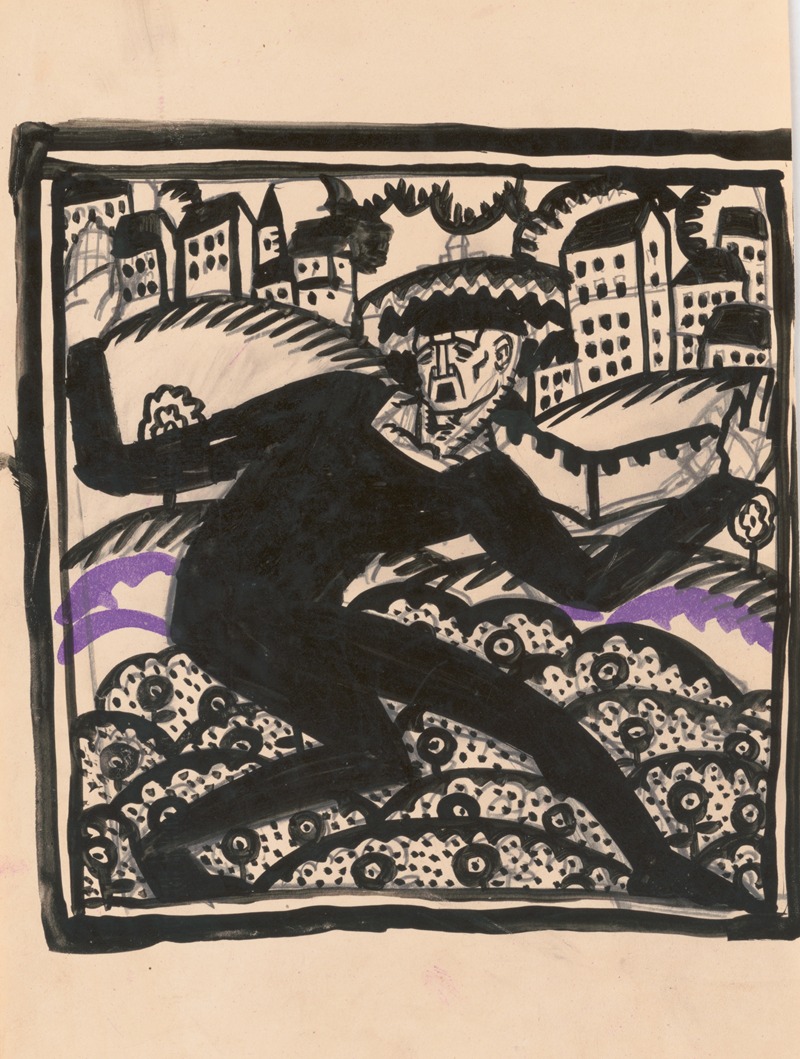
Design for fine art print, ‘The Mad Dancer’.] [Original study for woodcut print
A hand-painted replica of Winold Reiss’s masterpiece Design for fine art print, ‘The Mad Dancer’.] [Original study for woodcut print, meticulously crafted by professional artists to capture the true essence of the original. Each piece is created with museum-quality canvas and rare mineral pigments, carefully painted by experienced artists with delicate brushstrokes and rich, layered colors to perfectly recreate the texture of the original artwork. Unlike machine-printed reproductions, this hand-painted version brings the painting to life, infused with the artist’s emotions and skill in every stroke. Whether for personal collection or home decoration, it instantly elevates the artistic atmosphere of any space.
Winold Reiss (1886–1953) was a German-American artist known for his portraits and graphic designs, particularly his work in the early 20th century. Reiss was born in Karlsruhe, Germany, and studied at the Royal Academy of Fine Arts in Munich. He immigrated to the United States in 1913, where he became a prominent figure in the American art scene, especially noted for his depictions of Native Americans and African Americans, as well as his contributions to modernist design.
"The Mad Dancer" is a fine art print that originated as an original study for a woodcut by Winold Reiss. This piece exemplifies Reiss's skill in capturing dynamic movement and emotion through the medium of woodcut, a technique that involves carving an image into the surface of a block of wood, with the raised areas representing the parts that will be inked and printed. Woodcut prints are known for their bold contrasts and ability to convey strong, graphic imagery, which Reiss utilized effectively in his work.
Reiss's style was heavily influenced by his European training, yet he adapted it to fit the American context, often incorporating elements of Art Deco and modernism. His work is characterized by a vivid use of color and a keen attention to detail, which can be seen in "The Mad Dancer." This piece likely reflects his interest in capturing the essence of his subjects, portraying them with a sense of vitality and movement.
Throughout his career, Reiss was committed to portraying cultural diversity and was particularly interested in the cultural melting pot of the United States. He often traveled to different regions to study and depict various communities, including Native American tribes and Harlem Renaissance figures. His portraits are celebrated for their respectful and dignified representation of his subjects, challenging the stereotypes prevalent at the time.
Reiss's work in woodcut prints, including "The Mad Dancer," contributed to the broader acceptance and appreciation of printmaking as a fine art form in the United States. His prints were not only artistic expressions but also served as a means of cultural documentation and commentary. Reiss's legacy is preserved in various collections and exhibitions, and his influence can be seen in the continued interest in printmaking and graphic design.
While specific details about "The Mad Dancer" are limited, it stands as a testament to Winold Reiss's artistic vision and his ability to convey emotion and movement through the medium of woodcut. His work remains an important part of American art history, reflecting the diverse cultural landscape of the early 20th century.







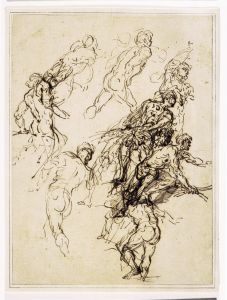
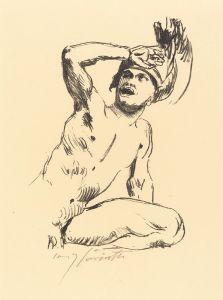
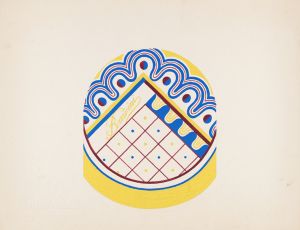
![Designs for the Puck Theater , New York, NY.] [Exterior perspective study](/imgs/249327/s/winold-reiss-designs-for-the-puck-theater-new-york-ny-exterior-perspective-study-df16fd5a.jpg)
![Designs for unidentified restaurant or bar interiors.] [Color study of bar, showing elevations with turquoise and vermillion decorations with tropical theme, no. 1](/imgs/249335/s/winold-reiss-designs-for-unidentified-restaurant-or-bar-interiors-color-study-of-bar-showing-elevations-with-turquoise-and-vermillion-decorations-with-tropical-theme-no-1-cec5c0ed.jpg)

![Design for Cincinnati Union Terminal.] [Study for the color treatment of the ceiling](/imgs/249410/s/winold-reiss-design-for-cincinnati-union-terminal-study-for-the-color-treatment-of-the-ceiling-5366bd83.jpg)
![Designs for theater with black-framed proscenium and boldly colored settings.] [Study for stage light wall decoration, possibly for Caf ̌Crillon ……](/imgs/249421/s/winold-reiss-designs-for-theater-with-blackframed-proscenium-and-boldly-colored-settings-study-for-stage-light-wall-decoration-possibly-for-caf-crillon--2b2d7011.jpg)
